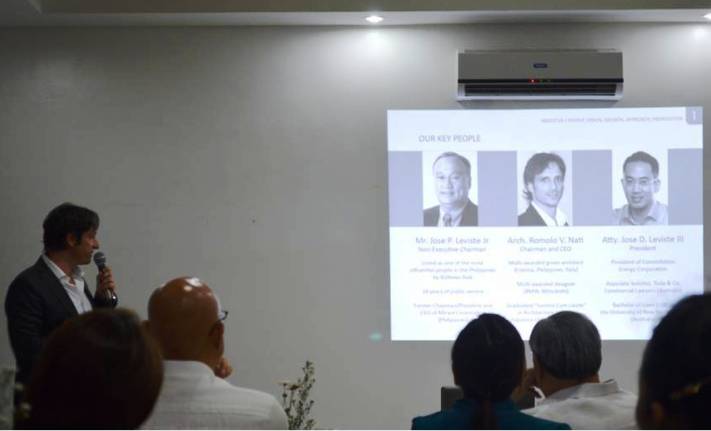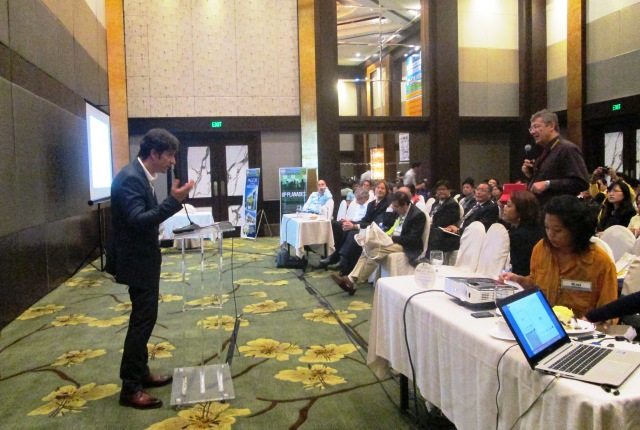
Primavera Residences recently partnered with BPI Family Savings Bank to conduct a Business and Investment Opportunity Forum. The event called Sustainable Opportunities and Advocacies in the Regions or SOAR was held last October 17, 2013 at the Multi-purpose Hall of Primavera Residences in Pueblo Business Park, Cagayan de Oro City.
Among the topics discussed during the event was “ITPI Green Architecture Design and Construction: The Primavera Residences Experience”. The talk was conducted by ITPI Executive Chairman and CEO Arch. Romolo Nati and he discussed not only what sets Primavera Residences apart from the rest, but also the importance of sustainable architecture.
Here are 10 key points of his discussion.
1. Inspired by nature. ITPI believes that nature holds the answer to sustainable design. Taking a cue from Mother Nature herself, the company strives to develop self-sustaining, flood-free, and earthquake-resistant structures which are inspired by the beauty and functionality of nature. These green structures fuse human technology with the best that nature has to offer.
2. Cross-disciplinary Approach. Primavera Residences is a brainchild of three strong forces: ITPI’s real estate ingenuity, CEC’s (Constellation Energy Corporation) renewable energy initiatives, and the expertise of RVN+ in Green Architecture and Design. The result? Beautiful, sustainable, and cost-effective designs.
3. Where no one has gone before. Primavera Residences, just like the rest of ITPI’s projects, offer a unique value proposition to its clients. With its eco-friendly design, unique innovations, prime location, and cost-efficient models, ITPI is leading the market in sustainable development.
4. The impact of real estate on the environment. Arch. Nati pointed out that the world’s cities occupy only 2% of the Earth’s land area, and yet it accounts for 70% of harmful greenhouse gas emissions. At the rate we are going, it is expected that by 2030, 59% of the world’s population will be living in urban areas, and by the year 2050, the consumption of energy for cooling will be grow tenfold. Increased energy consumption could lead to an increase in carbon dioxide emissions which will eventually lead to climate change and environmental degradation. Real estate development plays a big role in this, making sustainable architecture a necessary long-term solution.
5. Human resource consumption versus nature. Relying too much on technology coupled with our misconception that we have unlimited resources – this has led to the rapid deterioration of our environment. Where our cities once adapted to the local environment, we now manipulate our environment to adapt to us, hence the big change. To become sustainable, we need to reverse this mindset and change our perspective. We need to go back to nature.
6. Nature as the solution. There are patterns which can be found behind natural living structures. These processes, when studied and thoroughly examined can be translated into architectural designs and sustainable solutions. This is known as biomimicry and it has long been in existence, but has simply been overlooked amid all the new ways of doing things. Making nature as the basis of design allows ITPI to lower energy and resources consumption thereby reducing costs on electricity and water, among others.
7. Performance-based design process. While the traditional way of doing things calls for low tech design and high tech construction, ITPI does the exact opposite with high tech design and low tech construction. This result to lower cost and maintenance as well as low power requirement.
8. Environmental Analysis Tools. To aid ITPI in harnessing the power of nature, different software programs are being used. The different analysis involved include calculations for sunlight hours, wind patterns, and internal daylight. This is a great example of technology working hand in hand with nature.
9. ITPI Projects. Taking inspiration from the beauty and efficient design found in nature, the completed and upcoming projects of ITPI are of stellar quality and are highly-recognized internationally. These projects include Coral City (Quezon City), Stellar of Light (Payatas, QC), Sto. Tomas (Batangas), and of course, their pet project, Primavera Residences in Cagayan de Oro City which has already sold 188 units in a span of three years.
10. Why go green? Green properties are appraised 10 – 15% higher than its non-green counterparts, retail sales of eco-friendly buildings are higher by 20%, and they sell twice as fast as conventional homes. Therefore, not only are you doing your share in helping reduce environmental degradation, it is also so much more profitable and beneficial in the long run.
Italpinas’ award-winning designs and innovations are all based on ideas drawn from nature, coupled with the foresight, vision, and creativity of the people behind it. For example, did you know that the concept behind Cagayan de Oro’s very own Primavera Residences was actually based on the ventilation system found inside a termite’s mound?
Want to know more about CDO’s first and only eco-friendly building? Go HERE.



